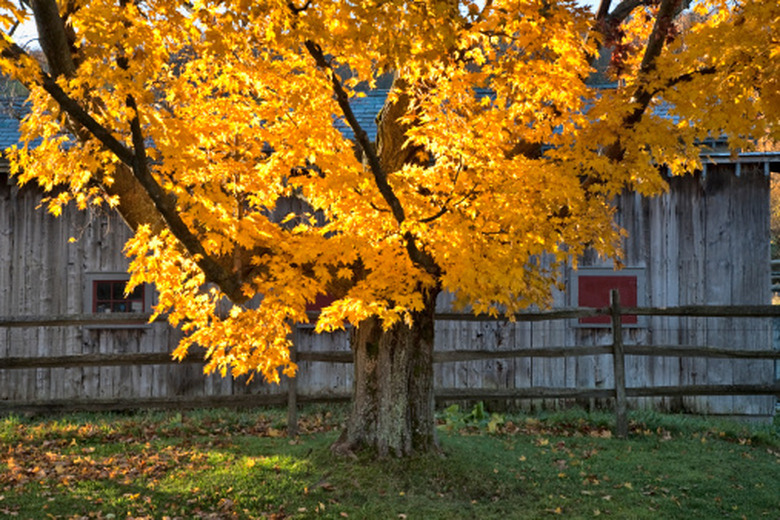Tree Borers In Maple Trees
The prized ornamental maple trees in your home landscape might be under the dangerous threat of tree borers. These destructive pests are often attracted to stressed or weakened maple trees. Provide consistent care for vigorous maples with a greater capacity to avoid infestations. For continued health and enjoyment of your maples, grow them in full sun to partial shade and in well-drained soil rich in nutrients.
Carpenterworm
Carpenterworms (Prionoxystus robiniae) are wood-boring insects that attack maple trees. As one of the most prevalently attacked trees, maples may suffer severe damage from this tree borer infestation. In the young larval stage, carpenterworm caterpillars reach a length of 2 to 3 inches, with a display of white/green bodies and dark heads. In maturity, carpenterworms are moths that display black/gray male bodies or whitish female bodies. Freshly hatched larvae tunnel into sapwood and then heartwood, leaving holes and great damage in their wake. Once larvae bore into bark, chemical treatments are not effective. Contact your local county extension agent or a licensed professional for assistance, as attempting to use a chemical treatment is complex due to the life cycle of carpenterworms as well as their limited accessibility. Consider the use of nematodes Steinernema feltiae or Steinernema carpocapsae, according to the University of California IPM Online. These beneficial organisms kill carpenterworm borers without damaging your maple tree. Purchase beneficial nematodes in a garden supply store, catalog or online.
Twig Pruner
Twig pruner (Elaphidionoides villosus) target maples among other trees like oaks and pecans, according to the Texas Agricultural Extension Service. In their larval stage, twig pruners chew rings around branches until they reach thinner bark layers. This damage results in the breakage and falling of tree branches. Overwintering in fallen twigs, twig pruners emerge as adults beetles that measure approximately 1 inch in length, displaying thin, yellow/gray bodies. Though no chemical control is recommended for twig pruners, speak with a professional about the potential use of chlorpyrifos, commonly recommended for wood-boring beetles. Additionally, remove and destroy fallen plant parts to decrease the borer population.
Red Oak Borer
Red oak borer (Enaphalodes rufulus) attacks maple trees and oak trees. Red oak borers damage trees when larvae feed on plant bark, encircling branches and causing visible scars. Red oak borers feed for just over a year before taking up residence in deeper tunnels where they mature into adults. As these pests continue to bore into the heartwood of your maple tree, the damage leads to death of tree limbs. Adult red oak borers are recognizable with their red/brown bodies that measure up to 1 1/8 inch in length. For control, apply an insecticide with the active ingredient chlorpyrifos, according to the Texas Agricultural Extension Service.
